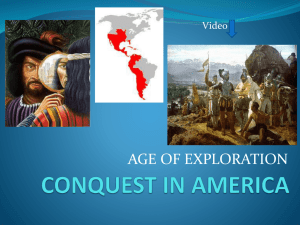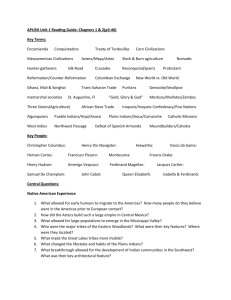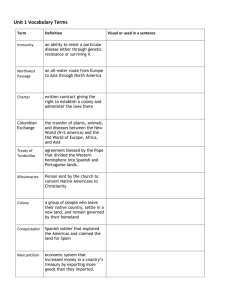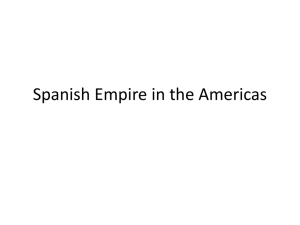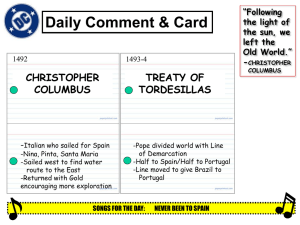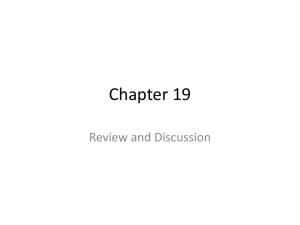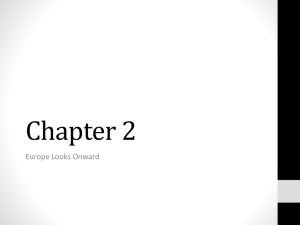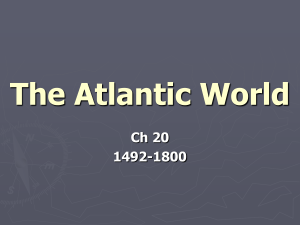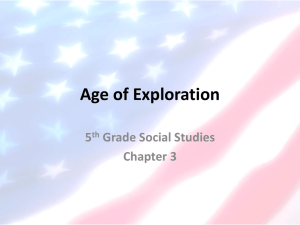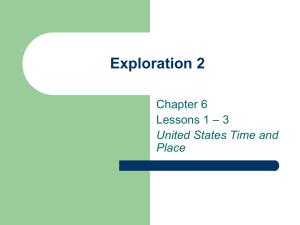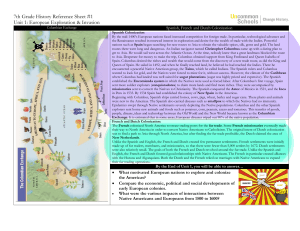Chapter 2 Europeans and Africans Reach the Americas
advertisement
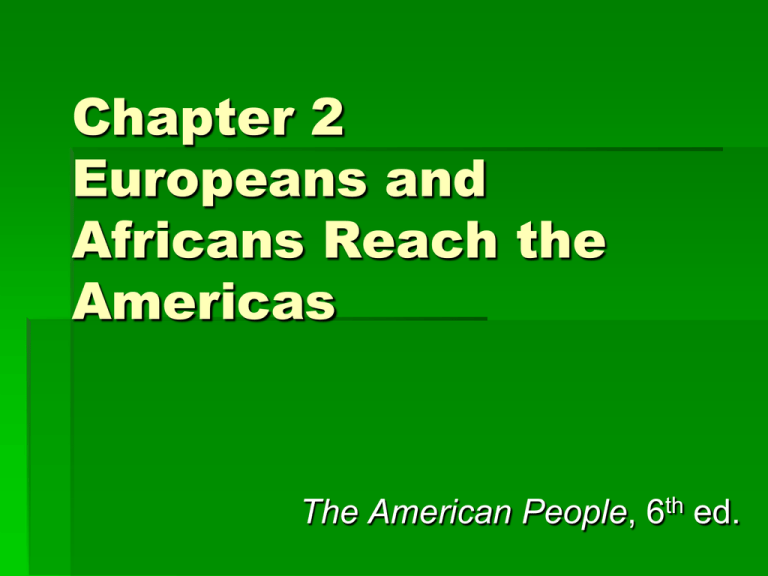
Chapter 2 Europeans and Africans Reach the Americas The American People, 6th ed. I. Breaching the Atlantic The Columbian Voyages Intending to discover an oceanic passage to Asia, in 1492 Christopher Columbus instead mistakenly discovered the Americas. Religious Conflict During the Era of Reconnaissance Martin Luther’s Protestant Reformation John Calvin’s Calvinism Henry VIII and the Anglican Church II. The Spanish Conquest of America Caribbean Experiments Columbus’s second voyage to the New World established the first Spanish colony in the Americas (in present-day Santo Domingo). Tainos were the first indigenous people to meet the Spaniards. The Conquistadors’ Onslaught at Tenochtitlan Within a single generation after the death of Columbus, Spain had conquered most of the New World. Spain was motivated by religion, nationalist pride, and dreams of personal enrichment. The Great Dying Spanish contacts with the natives of the Caribbean, central Mexico, and Peru in the early sixteenth century triggered a biological epidemic of smallpox in which some 6 million people perished in 15 years. The Columbian Exchange Imported animals from Europe (cattle, goats, pigs, etc.) devastated the fragile environment of the New World. Various plants (especially weeds) imported accidentally from Europe caused significant damage to the ecosystem Silver, Sugar, and Their Consequences Silver was found abundantly in the New World, especially in South America. Native labor was coerced into mining the metal for the Spanish. Wild influx of silver nearly destroyed the financial markets of Europe. Sugar production grew at an alarming rate, due to the changing tastes of Europeans. African slaves were deemed the best labor to produce the sugar. Spain’s Northern Frontier Composed of the present-day Sun Belt of the United States: Texas Florida New Mexico Arizona California III. England Looks West England Challenges Spain England was the slowest European power to begin expansion in the New World. They were initially motivated by the need to expand fishing areas and find new sources of wood. The rift between England and Spain centered on religion (Catholic v. Protestant). England defeated the Spanish Armada in 1588; a gigantic upset. The Westward Fever The opportunities of the New World began to permeate all levels of English society in the 1580s. England’s first effort at colonization occurred in Ireland. England’s first attempts at American colonization were weak and unprofitable. Anticipating North America Early English settlers had vague ideas about the nature of the American natives, some true some false. Some saw Indians as savage predators to be conquered quickly. Others saw them as docile and child-like, IV. African Bondage The Slave Trade The African slave trade began as an attempt to fill a labor shortage in the Mediterranean region as early as the eighth century. Portuguese merchants were the first European slave traders following decades of trade by the Arabs and Moors. The Middle Passage Also known as the Atlantic Passage, transferred slaves to the New World in four to eight weeks on board sailing vessels. Conditions were incredibly bad and many Africans died during the forced journey. Slavery in Early Spanish Colonies Many thousands of African slaves were brought along by the great Spanish explorers of the late fifteenth and early sixteenth centuries: Ponce de Leon Vasquez De Soto Coronado

